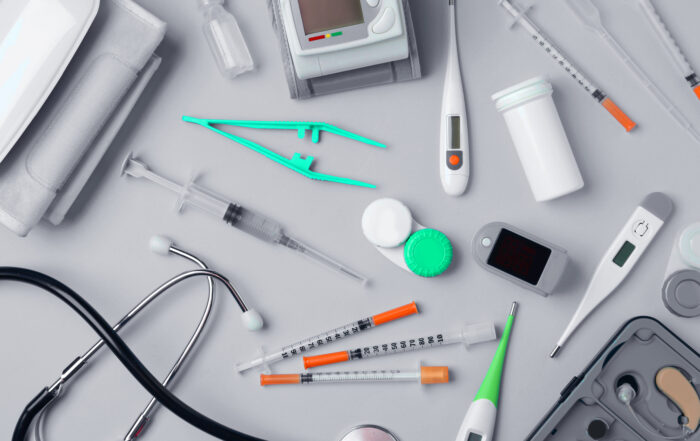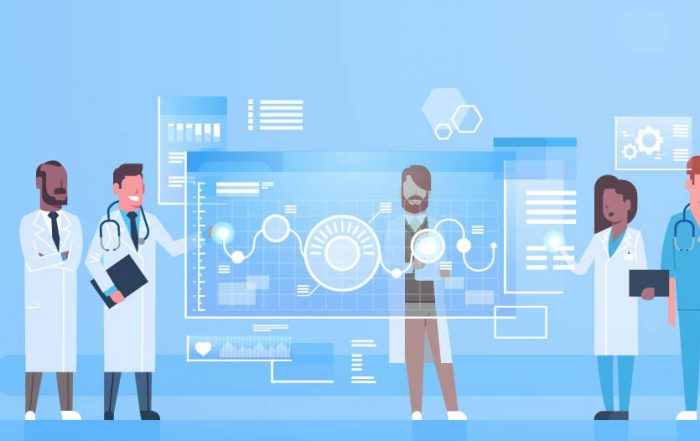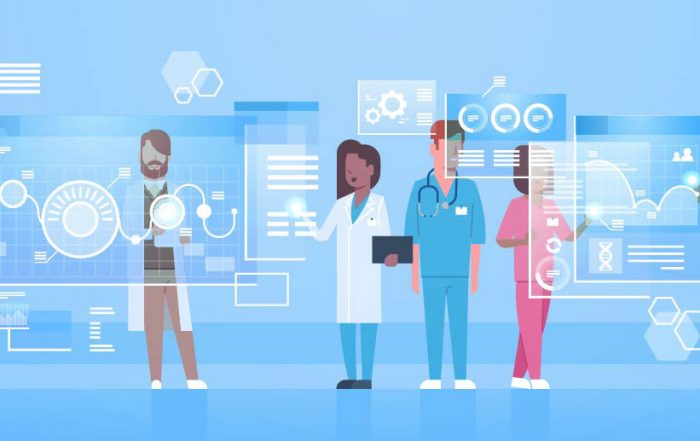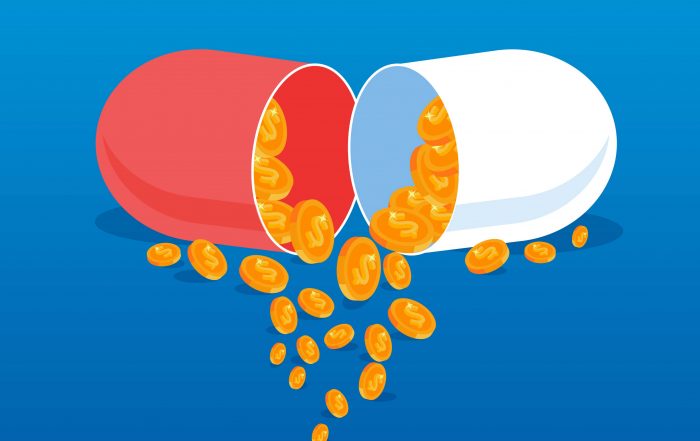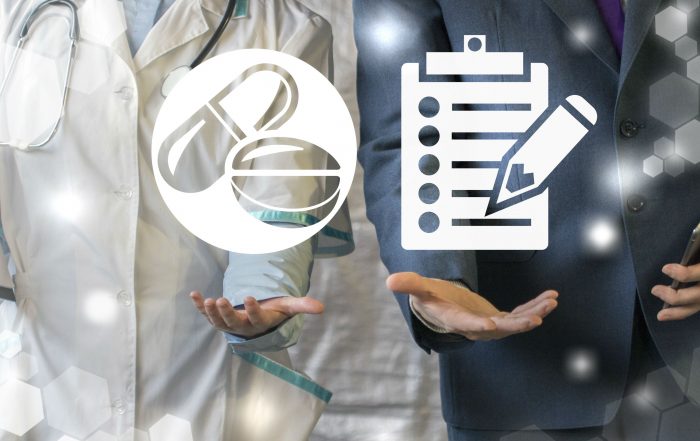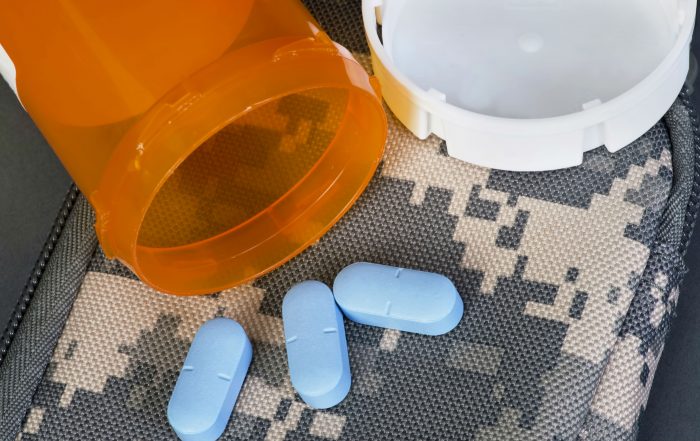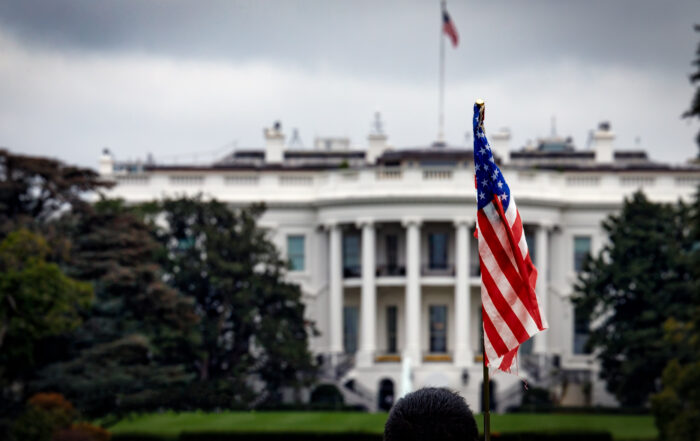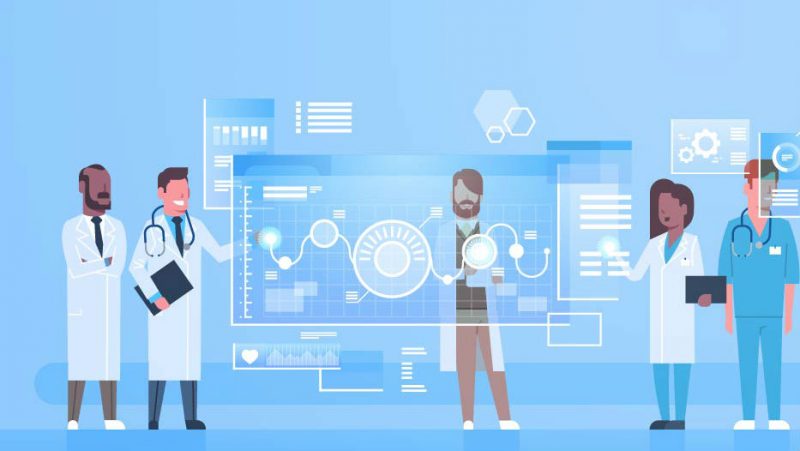
Real World Evidence: Implications and Challenges for Medical Product Communications in an Evolving Regulatory Landscape
by Nneka C. Onwudiwe, Keren Tenenbaum, Barry H. Boise, Jeff Elton, Meredith Manning
Aconfluence of factors is increasing and accelerating the digitization of large amounts of real world data (RWD) generated on individuals and patients.1 Life science companies are looking to use RWD from electronic health records and other sources to gain various insights, including how well products perform in the real world; how healthcare providers (HCPs) and patients manage a disease; what care coordination and treatment approaches are working; and how to measure and communicate the value of medical interventions and medicines. Emphasis on value and outcomes to gain market access and reimbursement is essential to getting medicines to patients who need them and to staying competitive in a value-based healthcare system. Companies are partnering to acquire new capabilities for generating and analyzing large amounts of data. For example, Roche paid $1.9B to acquire Flatiron Health, Inc., which owns an oncology electronic medical record platform.2 Also, Harvard Pilgrim Health Care Inc. contracted with Illumina, Inc. to evaluate non-invasive prenatal testing to assess costs and outcomes for low- and average-risk pregnancies.3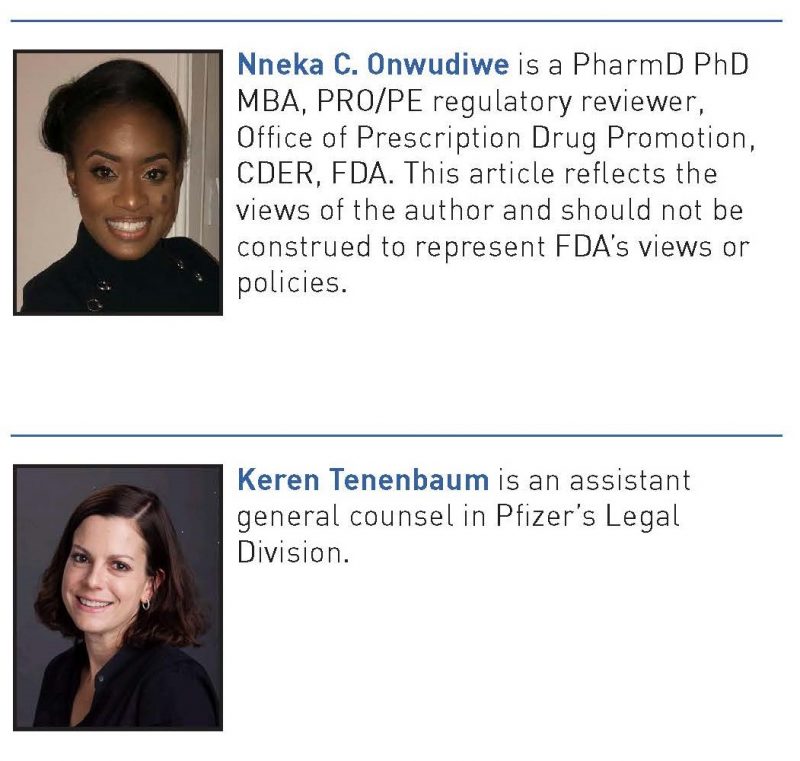
Certainly, these activities are based on a fundamental belief that RWD can support product development and communications of product value to key stakeholders. But, unlike any other product communications that rely on user experience data—such as travel, dining, or other forms of entertainment—medical product communications that rely on healthcare data are highly regulated. Even with the increased use of data, regulators and policy-makers have struggled to define appropriate boundaries for its use in external communications, while supporting innovation. Thus, those in the pharmaceutical and medical device industries find themselves with an abundance of data, but with unanswered questions about how it can be properly communicated.
In this article, we define RWD, describe some of its potential uses, and identify regulatory restrictions on its use to date. Then, we discuss how such data might be used in a narrow area, medical product advertising and promotion, and identify potential challenges that need to be addressed so that these data can more fully be utilized in responsible ways.
Real World Data (RWD) and Real World Evidence (RWE): Defined
In December 2016, Congress passed the 21st Century Cures Act and included provisions requiring FDA to “establish a program to evaluate the potential use of real world evidence (RWE).”4 The statute defines RWE as “data regarding the usage, or the potential benefits or risks, of a drug derived from sources other than randomized clinical trials.”5 Thus, RWE is defined by what it excludes, namely, data from traditional, confirmatory clinical trials, which makes the scope of included types of data under RWE quite broad.6
In the summer of 2017, FDA’s Center for Devices and Radiological Health (CDRH) issued a final guidance, Use of Real-World Evidence to Support Regulatory Decision-Making for Medical Devices: Guidance for Industry and Food and Drug Administration (FDA) Staff (CDRH Guidance).7 The CDRH Guidance defines RWD as “data relating to patient health status and/or the delivery of health care routinely collected from a variety of sources” and “RWE as clinical evidence regarding the usage, and potential benefits or risks, of a medical product derived from analysis of RWD.” It provided examples of RWD, including data derived from electronic health records (EHRs), claims and billing data, data from product and disease registries, patient-generated data, and data gathered from other sources such as mobile devices.
Despite these efforts, FDA’s Center for Drug Evaluation and Research (CDER) officials have cautioned that
[a]lthough access to real-world data adds important dimensions to the assessment of therapies and important progress is being made in the methodologic arena, these factors do not yet suffice to fully overcome the fundamental issues of confounding, data quality, and bias, unless other, specific countervailing features of the evaluation are relevant.8
These potential limitations must be balanced against the potential benefits of RWE, particularly that it is significantly easier to gather and that it is “highly pragmatic and . . . [therefore] more generalizable.”9 The pragmatic nature of RWD—it provides evidence about the use of the product in routine clinical practice—is among its significant benefits, and pragmatism certainly provides tremendous advantages to both data users and payors of medical products in terms of its generalizability. And, in an era where determining value is a clear goal, fully recognizing limitations of the health care system and the more pragmatic aspects of a real world study, RWD is increasing in importance. Nevertheless, for stakeholders who are tasked with approving medical products for use and describing their efficacy and safety profiles, the degree of pragmatism (which can introduce bias and exaggerate the estimated treatment effect) can be a double-edged sword when considering how to balance the external and internal validity. For example, blinding is an effective way of minimizing biases from differential treatment or assessment of patient outcomes (i.e., “detection bias” or “ascertainment bias”) but it may be difficult to blind (or mask) certain individuals such as patients, clinicians (e.g. surgeons), etc.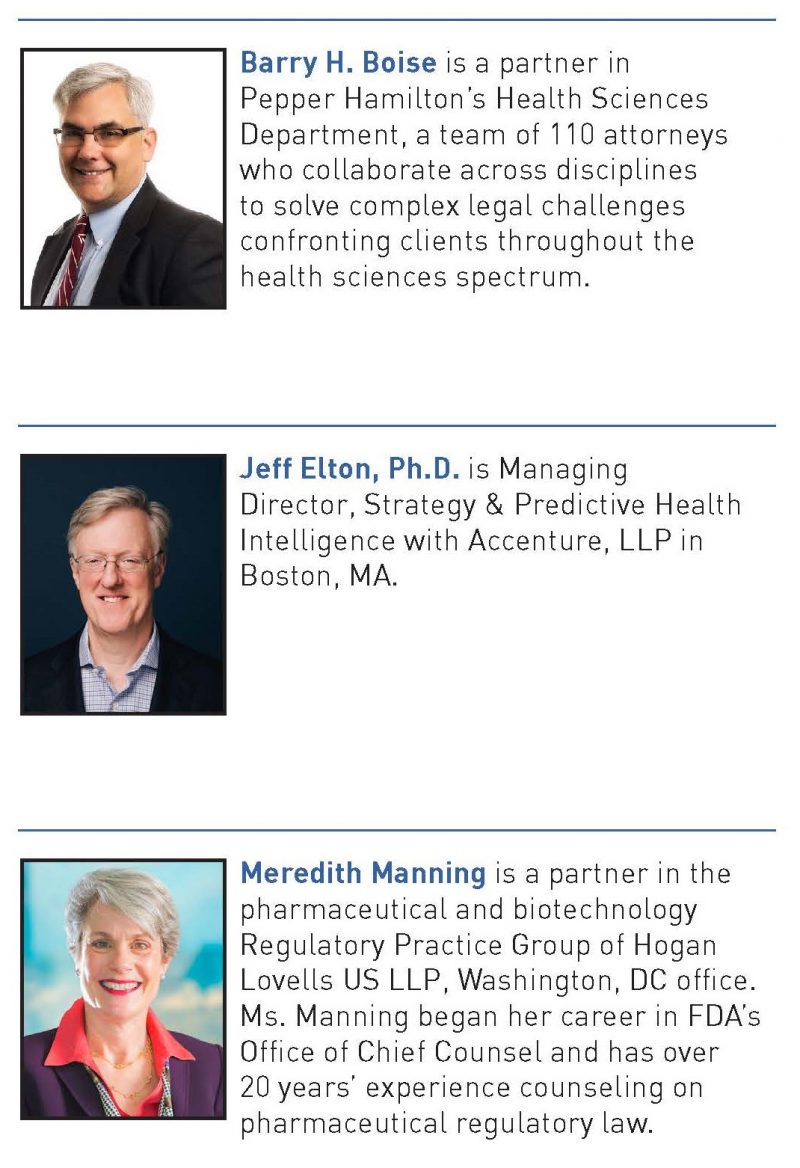
The Growing Use of RWE to Establish Value of Medical Products
RWD and RWE can support comparative analyses of the economic outcomes of different health care interventions (e.g., therapeutics, devices, or procedures), and can assist in evaluating clinical outcomes of a particular therapy,10 relative to another therapy, or standard of care. For example, a new therapy that can be administered by the patient at home, with comparable outcomes, would likely provide considerably higher value in terms of convenience and time cost than the same therapy delivered at the HCP’s office.
As we move towards a number of new reimbursement models that emphasize value, the use of RWD is expected to grow in importance and broaden the ability of payors to assess the quality of the evidence when making reimbursement or coverage decisions. For example, the Centers for Medicare and Medicaid Services (CMS) has several value-based programs that link payments to quality/value, including the Hospital Value-based Purchasing (VBP) Program that adjusts payments to hospitals under the Inpatient Prospective Payment System (IPPS) based on measures of outcome, such as patient experience. Increasingly, activity in this space is becoming foundational to medical product developers, with the foremost being market access and adoption. With growing utilization of healthcare resources owing to patients living longer with more co-morbidities in the presence of health care budget constraints, evidence from RWD sources will increasingly become important in the medical evidence hierarchy.
Real world studies have been conducted for many years. Historically, the lack of robustness of the data and the quality of the studies made it difficult to conduct an effective cost-effectiveness analysis or assess the long-term benefit or safety of a treatment, and they sometimes relied
on relatively small data sets: for example, charts rather than big data, such as administrative claim records, or those acquired through expensive multi-year studies (e.g., longitudinal case report forms). With the greater ubiquity of EHR systems across most developed countries, and the United States in particular, coupled with the availability of large third-party data aggregators of payor claims, RWE studies are advancing rapidly. Risk-bearing healthcare providers, payors, and health authorities use these to develop clinical guidelines and to inform medical management decisions. Many global reimbursement agencies ask for RWD as part of their standard assessment process, including NICE in the UK and other health technology assessment (HTA) agencies.11
RWE to Support Coverage and Reimbursement Decisions
Industry-sponsored research studies that support product value communications and market access are not uncommon. Value communications between medical product manufacturers and payers, including proactive pre-approval communications about investigational drugs and devices,12 may permit more accurate healthcare forecasting and rate-setting of new medical products. Payors and risk- bearing HCPs increasingly are interested in the value of a healthcare intervention or a drug, including its long-term value, and how it might impact other system-wide costs and patient access.13 They also want information on how a new product compares to standard of care as well as understanding of the budgetary impact. Payors are also requesting data on treatment effectiveness in the care setting and patient population similar to theirs.
In a similar manner, HTA agencies outside the United States are looking for information on relative effectiveness of drugs in routine “real world” clinical settings to address the introduction of expensive innovative new drugs.14 More and more, drug manufacturers are looking to incorporate endpoints that are specifically relevant for payor decision —making into clinical trials and real world studies to address payor assessment needs and support market access negotiations.
Patient Engagement and Experience
Patient experience is defined as interactions that patients have with the healthcare system, including their care from health plans, physician practices, and other healthcare facilities.15 With increasing uses of technology, patients are playing a greater role in better managing their healthcare, and as a result, digital devices can gather information on patient self-management, such as schedule adherence, modifying diet, or achieving a targeted activity level. These tools (e.g., apps, wearables, digital patient charts) can complement medical interventions and are consequently being integrated into the structure of pre- and post-approval studies. Data generated by these emerging technologies will likely lead to the integration and evolution of this information into the benefit risk assessments for new medical products. In fact, comparisons of efficacy that omit patients’ reported experience are no longer viewed as telling the full value story. For example, if the therapeutic side-effects of one medicine impacts quality of life and lowers patients’ adherence even with better clinical outcomes, patients might prefer a better-tolerated drug that has less direct therapeutic benefit; a risk-benefit trade-off that a patient may be willing to make. The Cures Act creates new directives and opportunities for capturing and measuring patients’ experiences and perspectives in drug development. Regardless, varying methodological approaches and challenges in data collection in an evolving regulatory landscape create further challenges in the use of RWD and RWE. Thus, a compliant vehicle for performing, evaluating, and communicating these types of RWE is essential.
RWE in Medical Product Communications
RWE may help to inform comparative evidence, label expansions and modifications for an already approved indication such as different dosing regimens, dose reduction for safety and tolerability, longer duration of treatment, sub-population uses, inclusion of endpoints relevant to payor decision-making, and comparative efficacy. RWE can also be utilized for postmarketing studies as well as safety updates to better characterize the benefit-risk profile of a medical product. The challenge is that many of these elements are not part of the pivotal clinical studies that serve as the basis of the approval and labeling for products intended use, and manufacturers use RWD for a range of commercial purposes.
As discussed previously, RWE is particularly useful in demonstrating the value of medical products in terms of cost savings and other endpoints that are more difficult to evaluate in a traditional randomized clinical trial setting, such as the effectiveness of an intervention in a real-world setting, cost-effectiveness, adherence, willingness to pay (WTP) and patient preference, and other outcome measures assessed with observational study designs, such as quality adjusted life years (QALYs). However, in the current regulatory framework, RWE does not necessarily rise to the level of “substantial evidence” to support a promotional claim as required by section 505(d) of the Federal Food, Drug and Cosmetic Act (FDCA) and FDA’s advertising regulation—raising the question whether it can be used under FDA’s evolving RWE regulatory landscape for medical product communications for claims of effectiveness. Additionally, postmarketing studies that incorporate these considerations are becoming of greater importance and harmonization of analytical methods to address some of the challenges with observational analyses (e.g., missing data, selection bias, confounding) and big data are needed.
Regulatory Environment
Product labeling—including advertising and promotional materials—can misbrand the product by making false or misleading statements or conclusions.17 FDA has by regulation set out standards for advertising that generally require that ads that communicate claims of effectiveness be supported by “substantial evidence”18 or “substantial clinical experience.” Thus, to fully and effectively use RWE in product communications, there must be some statutory or regulatory vehicle for changing these standards. Congress began that process in 1997, and FDA expanded on it through guidance in 2017.
The Food and Drug Administration Modernization Act of 1997
The Food and Drug Administration Modernization Act of 1997 (FDAMA 114) was Congress’ first attempt at creating a safe harbor for promotional claims supported by something less than substantial evidence.19 It permitted manufacturers to communicate health care economic information (HCEI) not found in labeling to formulary committees and “similar entities.” The statute restricted the communications to information that “directly relates to” an approved indication so long as the information was supported by “competent and reliable scientific evidence.”
Unfortunately, the FDAMA 114 statute also generated uncertainty about what information fell within the statute’s scope. There was confusion around what constituted HCEI, who was included in “formulary committee or similar entity,” and what is meant by “directly relates” to an approved indication. Thus, the safe harbor is underutilized as industry has been apprehensive about potential FDA enforcement for failing to meet the substantial evidence standard for advertising.
The Cures Act
Section 3037 of the Cures Act amended the FDAMA 114 safe harbor and attempted to address some uncertainty surrounding the law.20 Specifically, the Cures Act Amendment (the Amendment) expressly includes elements or structure “underlying or comprising” a comparative analysis of clinical outcomes as part of HCEI (something FDA’s Office of Prescription Drug Promotion, formerly Division of Drug Marketing, Advertising and Communications—DDMAC, had objected to in prior enforcement positions).21, 22 It also described and expanded the permissible audience, making clear that payors and entities with knowledge and expertise in healthcare economic analysis, carrying out responsibilities for selection of drugs for coverage and reimbursement, could receive HCEI. It is still unclear whether the audience needs to be active in the process of making reimbursement and coverage decisions.23 The Amendment also removed the word “directly” from the requirement that information “directly relates to” an approved indication. Finally, it added a requirement that a “conspicuous and prominent” statement disclose any material difference between the HCEI and the approved labeling.
Recent FDA Guidance
The Amendment provided needed clarification of FDAMA 114, and it was quickly followed by two FDA draft guidance documents interpreting the amended statutory provision and providing illustrative examples to guide dissemination of information outside the four corners of a drug’s approved labeling. On June 12, 2018, FDA issued final versions of the draft guidance documents, signaling agency flexibility on certain industry communications with health care providers and payors.24
The FDA guidance, Drug and Device Manufacturer Communications with Payors, Formulary Committees, and Similar Entities – Questions and Answers, interprets the Amendment and directly addresses questions that relate to communications with payors.25 For example, it clarifies key issues, such as what information qualifies as HCEI, and establishes standards for data that could apply to RWD and RWE. Notably, the final version of the guidance clarifies that the safe harbor for manufacturers to provide HCEI extends to investigational products and new uses of legally marketed products for both drugs and medical devices. The second guidance, Medical Product Communications That Are Consistent With the FDA Required Labeling – Questions and Answers, focuses on recommendations for conveying information in labeling and advertising that is not contained in the approved product labeling in a truthful and non-misleading way, consistent with FDA-required labeling. Any data, studies, or analyses relied on should be “scientifically appropriate and statistically sound” to support the representations made in the promotional communication. The guidance notes, for example, “evidence other than that which meets the new drug approval standard of ‘substantial evidence’ of effectiveness could be used to support certain representations or suggestions about a prescription drug in a [consistent with FDA-required labeling] promotional communication.” Accordingly, RWE may qualify as “scientifically appropriate and statistically sound,” though the guidance makes clear that FDA does not intend to rely on the communication to establish a new intended use.
HCEI is defined as “any analysis (including clinical data, inputs, clinical or other assumptions, methods, results, and other components underlying or comprising the analysis) that identifies, measures, or describes the economic consequences”36 of use of the product. It can include the economic consequences related to clinical outcomes of treating a disease or of preventing or diagnosing a disease. For example, HCEI may help evaluate the cost of treatment for a chronic condition used beyond the length of the pivotal trial or could evaluate the economic impact of other factors such as lost days of work due to the condition. HCEI may also include comparative analyses of the economic consequences of a drug’s clinical outcomes to alternative options or to no intervention. As discussed above, both could be derived from RWD, so long as it also meets the standard of “Healthcare Economic Information.”
Synthesizing the statutory provisions, including amendments, and the recent FDA guidances (though non-binding), drug manufacturers have a basis for understanding the key terms and provisions relating to dissemination of HCEI. The guidance interprets HCEI to be based on competent and reliable scientific evidence (CARSE) if it is developed using generally-accepted scientific standards, appropriate for the information being conveyed, that yield accurate and reliable results. FDA will consider the merits of existing current good research practices for substantiation developed by authoritative bodies. Further, materials should clearly and prominently present information such as study design and methodology, generalizability, limitations, sensitivity analyses, and information relevant to providing a balanced and complete presentation. Finally, the Payor Guidance notes that the CARSE standard applies to all components of HCEI, including inputs and assumptions related to both economic consequences and clinical outcomes.
FDA Payor Guidance also permits some flexibility on what might “relate to” the approved indication. HCEI should relate to the disease or condition, manifestation of the disease or condition, or symptoms associated with the disease or condition in the indicated patient population. For example, HCEI may be based on data where the dosing regimen varies from the approved dose. This appears to expressly permit RWD on dosing, for example, an observational study based on drug utilization data from a health plan database, where actual use falls outside the recommended dosing regimen, such as a different dosing frequency or a different total dose. Of course, where “real world” deviations are substantial, implementing promotional messaging around those differences in terms of outcomes (e.g., medication adherence and clinical outcomes such as HbA1c) could pose challenges. Additional guidance from FDA would be helpful in supporting such communications.
The Payor Guidance notes that companies should include appropriate background and contextual information necessary to allow payors to fully understand the HCEI and to avoid falling into the “false and misleading” trap. These disclaimers might be important in describing RWD, how it was derived, and its limitations. Regardless, the agency appears to have significantly relaxed its expectation that industry relies solely on “substantial evidence,” which opens significant possibilities for use of RWE in product promotion.
Implications for the Use of Real World Evidence in Promotion
Section 3022 of the Cures Act directs FDA to evaluate how RWE can potentially be used to support approval of new indications for approved drugs or to support or satisfy postapproval study requirements. The law also requires a draft framework for implementation for the RWE program that includes information describing: the sources of real world evidence, including ongoing safety surveillance, observational studies, registries, claims, and patient-centered outcomes research activities; the gaps in data collection activities; the standards and methodologies for collection and analysis; and the priority areas, remaining challenges, and potential pilot opportunities. It does not address remaining gaps for other uses of RWE, including in product communications.
While the requirements related to RWE specify that it shall not alter the standards of evidence required for product approval, the Secretary’s authority to require postapproval studies, or the standards of evidence under which studies are evaluated, the Cures Act could impact evidence standards and methodological practices for data supporting product promotion and what constitutes false or misleading information. The Cures Act establishes CARSE as the standard, but this might change as the agency addresses the evidence gap between information supporting regulatory decisions versus healthcare decisions. Certainly, more guidance will be needed in this fast-changing environment. For example, the use of social media as a source of big data has gained a lot of attention as an efficient way to gather RWD on patient experiences.27 While progress is being made28 in applying RWD to drug development and medical product communications, more work is needed in areas such as RWD analytics. Table 1 on the next page lists some of the challenges with the current regulatory environment and highlights selected guidance documents that may provide some insight for sponsors or applicants of medical products considering using RWE to satisfy regulatory requirements.
Programs
Update Magazine
August/September 2018
Webinars
Table 1. Potential Challenges to the Use of Real World Evidence in Regulatory Decisions for Medical Product Communications
| Issues* | FDA Regulatory Guidance** | Current Challenges |
| Social Media | 1) Internet/Social Media Platforms with Character Space Limitations— Presenting Risk and Benefit Information for Prescription Drugs and Medical Devices 2) Internet/Social Media Platforms: Correcting Independent Third-Party Misinformation About Prescription Drugs and Medical Devices 3) Fulfilling Regulatory Requirements for Postmarketing Submissions of Interactive Promotional Media for Prescription Human and Animal Drugs and Biologics 4) Responding to Unsolicited Requests for Off- Label Information About Prescription Drugs and Medical Devices 5) Patient-Focused Drug Development: Collecting Comprehensive and Representative Input |
Social media as a source of real world data can provide a vast amount of user-generated content on treatment experience, but securing permission to access and use the content may create barriers because of privacy rights. Additionally, the quality of the information and the structure of the data can be difficult to analyze with the available data analytics tools. |
| Big Data Analytics and Data Science | None | Appropriate statistical methods for analyzing big data is needed to avoid making wrong statistical inferences and regulatory decisions. |
| Informed Consent | 1) Informed Consent Information Sheet Guidance for IRBs, Clinical Investigators, and Sponsors 2) Use of Electronic Informed Consent Questions and Answers |
Dealing with informed consent for patients whose health information may appear in administrative claims collected for other purposes but is now used for research to assess risks and/or benefits of a treatment, and how covered entities will protect the confidentiality of those records. Additionally, implications of HIPAA Privacy Rule and possible expansion to other entities not regulated by HIPAA (e.g., mHealth technologies and health social media). |
| Analytical Methodologies | None | Lack of recommendations on acceptable methods and approaches for handling issues such as data quality, missing data, and bias control in real world data. |
| Study Design and Conduct | Use of Real-World Evidence to Support Regulatory Decision-Making for Medical Devices | Lack of consensus on how to properly conduct and report real world evidence from observational studies and other emerging sources. |
| Interpretation and Communication of Scientific Conclusions | 1) Drug and Device Manufacturer Communications With Payors, Formulary Committees, and Similar Entities – Questions and Answers 2) Medical Product Communications That Are Consistent With the FDA-Required Labeling —Questions and Answers 3) Labeling for Human Prescription Drug and Biological Products – Implementing the PLR Content and Format Requirements 4) Providing Clinical Evidence of Effectiveness for Human Drug and Biological Products |
Further considerations for proper conduct of scientific research and correct inferences/interpretations for real world studies and how this may differ from CARSE or the “substantial evidence” standard. |
| Data Security and Privacy | IRB Review of Stand-Alone HIPAA Authorizations Under FDA Regulations | An individual’s right to revoke his/her authorization to particpate and the impact of continued use or disclosure of PHI already collected and the missing data problem in real world studies. |
| Data Architecture | 1) Providing Regulatory Submissions In Electronic Format — Standardized Study Data 2) Providing Regulatory Submissions in Electronic Format — Submissions Under Section 745A(a) of the Federal Food, Drug, and Cosmetic Act 3) Providing Regulatory Submissions in Electronic Format — Certain Human Pharmaceutical Product Applications and Related Submissions Using the eCTD Specifications 4) Electronic Source Data in Clinical Investigations 5) Study Data Technical Conformance Guide |
Properly handling unstructured data for regulatory decisions which can be found in a vast majority of big data (e.g., wearables, social media). |
| Data Storage | 1) Part 11, Electronic Records; Electronic Signatures — Scope and Application 2) Electronic Source Documentation in Clinical Investigations 3) Computerized Systems Used in Clinical Investigations |
The additional cost associated with transfer, storage, and management of large data sets for regulatory analysis and impact on existing user fees. |
| Data Quality and Monitoring | Establishment and Operation of Clinical Trial Data Monitoring Committees |
Data monitoring committee (DMC) role and responsibilities in the assessment of validity and integrity of real world studies. |
*Guidance documents represent FDA’s current thinking and do not establish legally enforceable responsibilities. Guidance documents should be viewed only as recommendations, unless specific regulatory or statutory requirements are cited.
**Explores certain concerns and areas for specific consideration and does not necessarily represent other published documents that outlines FDA’s position or ongoing work in the area.
Conclusion
The availability of RWD and their use to advance RWE insights will only accelerate. The widespread adoption and use of healthcare information systems and emerging health technologies to capture, store, manage, or transmit health information will change the types of data traditionally used to support regulatory decision-making. The introduction of these new sources of data into the existing benefit-risk framework may reduce residual uncertainty that can contribute to complex and challenging regulatory decisions as well as support optimizing treatment decisions by HCPs. Although incorporating RWD sources seems promising, the utility of the data will be realized only if the myriad methodological challenges associated with observational and big data are adequately addressed, and the definition and scope of the evidence standard for RWE is further clarified, rather than the existing CARSE standard for HCEI claims or the “substantial evidence” standard for claims of effectiveness. Therefore, some policy recommendations are necessary so that manufacturers can make valid inferences when communicating the benefits and risks of medical products and avoid false and misleading conclusions in promotion. To achieve that, policy adjustments and additional guidance are needed that keep pace with, and even guide appropriate uses of RWD.
- Several pieces of legislation address how data might be gathered and used, including the Affordable Health Information Technology for Economic and Clinical Health (HITECH) Act, for the adoption and meaningful use of health information technology, and the 21st Century Cures Act (Cures Act) requiring that the Food and Drug Administration (FDA) set out how such data can be used. See Public Law 114-255 (Dec. 13, 2016).
- S. Hansen, Accelerating Flatiron, Biocentury, March 12, 2018, at 5.
- E. McCallister, De-risking Risk Reduction, Biocentury, March 5, 2018, at 6.
- Cures Act § 3022.
- Section 505F(b) of the Federal Food, Drug, and Cosmetic Act (21 U.S.C. 355g(b)). In August 2017, section 901 of the FDA Reauthorization Act of 2017 (FDARA) amended this section by deleting ‘‘randomized’’ and inserting ‘‘traditional.’’
- Also in the Cures Act, Congress permitted the use of RWE in a regulatory setting, expressly allowing RWE to be used to confirm the clinical effectiveness of a regenerative medicine product after approval. 21 USC 356(g)(7). Use of RWE to support new drug applications is beyond the scope of this article, but this statutory provision likely signals willingness by lawmakers to permit its use more broadly.
- https://www.fda.gov/downloads/
- Sherman, et al. Real-World Evidence – What Is It and What Can It Tell Us? 375 NEJM 23, at 2295 (December 8, 2016).
- Jarow, et al. Multidimensional Evidence Generation and FDA Regulatory Decision Making: Defining and Using “Real-World” Data, 318 JAMA 8, at 703 (August 22/29, 2017).
- Clinical trials comparing a new treatment to an existing control arm or placebo.
- https://www.nice.org.uk/process/pmg4/chapter/incorporating-health-economics.
- Section III.B of the Drug and Device Manufacturer Communications With Payors guidance provides FDA’s thinking regarding communications to payors about investigational products. FDA does not intend to object, under 21 CFR § 312.7(a) or 21 CFR § 812.7(a) or otherwise, to the following types of information about investigational products provided by firms to payors prior to FDA approval or clearance, that is unbiased, factual, accurate, and non-misleading.
- Fendt PR, et al. The Value of Pre–FDA Approval Healthcare Economic Information Exchange Between Payers and Drug Manufacturers, 10 AmHealth Drug Benefits 424, November 2017.
- Makady, A, et al. “Policies for use of real-world data in health technology assessment (HTA): a comparative study of six HTA agencies.” 20.4 VALUE IN HEALTH 520 (2017).
- https://www.ahrq.gov/cahps/about-cahps/patient-experience/index.html.
- Substantial evidence of effectiveness. Section 505(d) of the Act describes “adequate and well-controlled studies,” including clinical investigations.”
- 21 USC § 331(a).
- 21 CFR § 202.1(e)(6).
- Food and Drug Administration Modernization Act of 1997, Pub. L. 105-115, § 114.
- 21st Century Cures Act, Pub. L. 114-255, § 3037.
- Stewart KA & Neumann PJ. FDA
Actions against Misleading or Unsubstantiated Economic and Quality-of-Life Promotional Claims: An Analysis of Warning Letters and Notices of Violation, 5 Value Health 390, Sep – Oct, 2002. - Neumann PJ & Bliss SK. FDA actions against health economic promotions, 2002-2011, https://www.sciencedirect.com/science/article/pii/S1098301512016075, last accessed April 2018.
- Note, though, that FDA’s recent guidance (discussed further below) clarifies that for individuals serving both as HCPs and on formulary committees, the provision of health care economic information to that individual, when acting within his or her capacity as a formulary committee member would be within the scope of the guidance/safe harbor.
- At the same time, FDA continues to emphasize its position that communications about unapproved uses remain unacceptable, even in light of First Amendment considerations. U.S. Food & Drug Admin., Memorandum: Public Health Interests and First Amendment Considerations Related to Manufacturer Communications Regarding Unapproved Uses of Approved or Cleared Medical Products (Jan. 2017), https://www.regulations.gov/document?D=FDA-2016-N-1149-0040. The final version of the guidance notes that there are still competing interests at stake between the need of payors and other similar audiences to obtain information and the public health risk of manufacturers providing unsubstantiated information.
- June 2018, https://www.fda.gov/downloads/drugs/guidancecomplianceregulatoryinformation/guidances/ucm537347.pdf (Payor Guidance).
- FDAMA 114 as amended by 21st Century Cures Act.
- https://rwe-navigator.eu/use-real-world-evidence/sources-of-real-world-data/social-media/.
- June 2018, https://www.fda.gov/downloads/Drugs/GuidanceComplianceRegulatoryInformation/Guidances/UCM610442.pdf (Patient-Focused Drug Development: Collecting Comprehensive and Representative Input).


